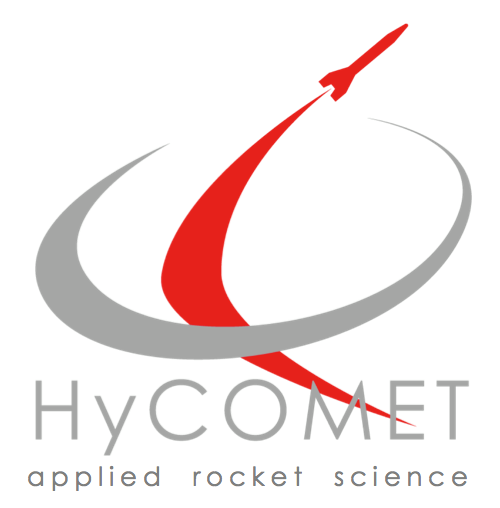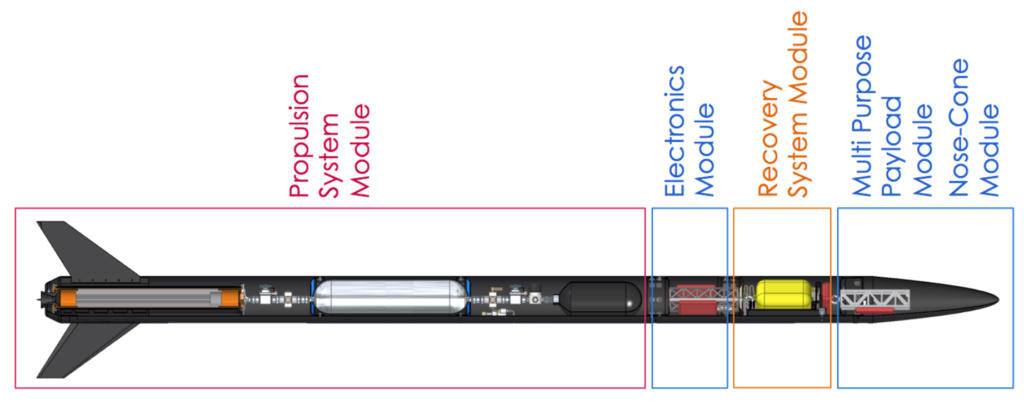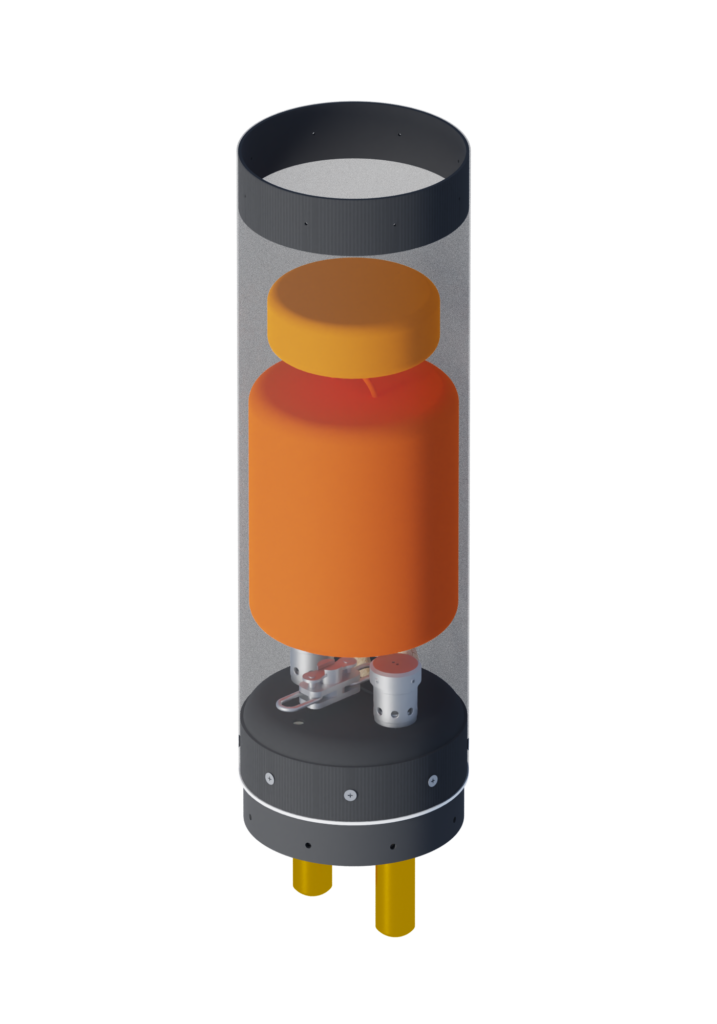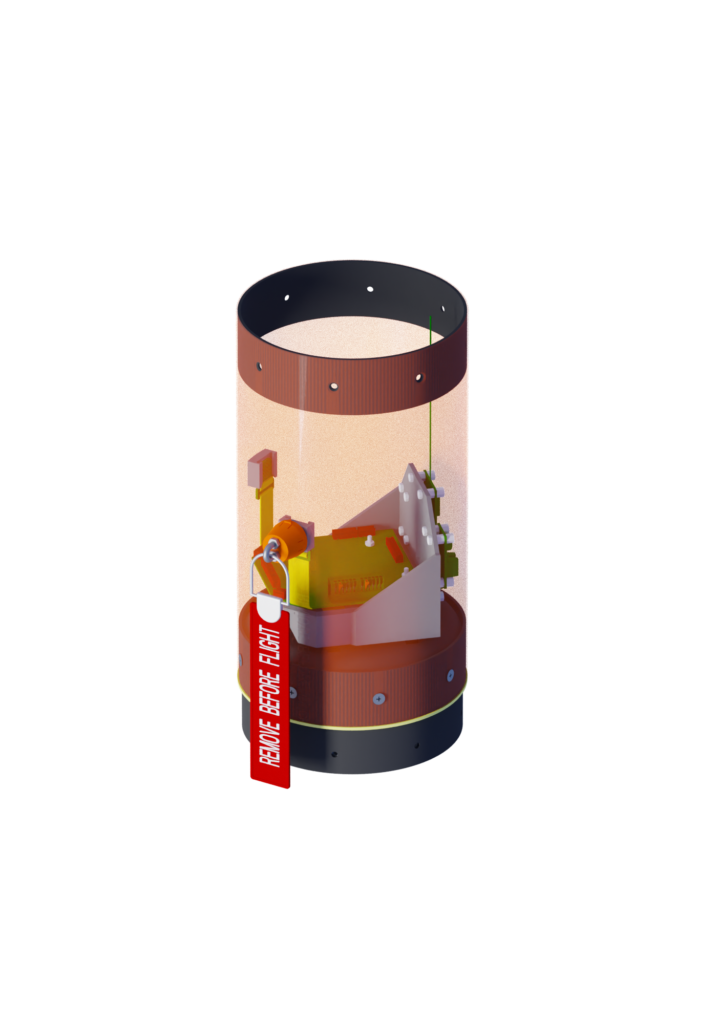
HyCOMET (Hybrid COMposite Expertimental RockeT) was a student research initiative in the field of experimental rocketry. As part of HyCOMET, students will develop, test and launch a rocket made of lightweight und fiber composite materials, in addition to designing a hybrid-built rocket engine. Every component of the rocket, from rough sketch on paper to working prototype, is created by students of all faculties at the University of Applied Sciences Augsburg. The HyCOMET-1, powered by a hybrid rocket engine composed of nitrous oxide and a synthetic material, is expected to reach a ceiling of 5000 meters (16400 ft) and break the sound barrier during its flight. The project is financed by the German Aerospace Center (Deutsches Zentrum für Luft- und Raumfahrt; DLR) via its STERN (Studentische Experimental-Raketen) program. Students of many disciplines at the UAS Augsburg working in their free time, in addition to a multitude of projects, Bachelor’s and Master’s theses contribute to HyCOMET, although the practice of Task-Based-Learning remains a priority. Depending on our stage of development, we sometimes consult research and industry experts to conduct workshops and seminars at the Hochschule. The experimental rocket HyCOMET-1 is composed largely of carbon fiber reinforced plastic (CFRP or CFK). This innovative lightweight building material makes it possible for the rocket to be extremely lightweight and highly durable, allowing high cruising altitudes with a maximum payload. The use of carbon fiber, however, necessitates much higher requirements in terms of planning and construction than for metall building materials. The use of CFRPs has found increased use even in conventional aerospace engineering. HyCOMET-1 is powered by the hybrid rocket engine HyER 1k FM, developed at the University of Applied Sciences Augsburg. The Rocket burns liquid nitrous oxide together with a synthetic polymer.

- Maximum altitude : 5000m (maximum altitude with the HyER 1k FM)
- Maximum velocity: Mach 1.2 (About 6s after launch)
- Maximum flight time: 500s (Climb + Landing with a parachute)
- Maximum thrust: 1000N
- Firing period: 10s
- Oxidant: N20 (nitrous oxide)
- Solid Fuel: Synthetic Material (e.g. polyethylene)
The HyCOMET-1 consists of several modules

Nose-Cone-Module
The Nose-Cone Module (short: NCM) reduces the aerodynmical drag during flight. To use the large volume of the cone it is also used as a Multi-Purpose-Module. Therefore it houses redundance electronics to record flight data, a beacon system for retrieval and an in-flight camera system.

Recovery-System-Module
Following the NCM the recovery system is housed in its own module. The two staged parachute-system uses a smaller drogue-chute to decelerate the rocket and a larger main-parachute to bring it safely to the ground. The ejectionmechanism is powered by two CO2 cartridges wich are used to activate the system by blowing off the NCM.

Electronics-Module
In the rockets center all main electronics are located. To record flight data a Altus Tele-Mega system is installed and connected to a self-designed interface-board with a power-supply-system. Important system are redundant.

Propulsion-System-Module
The more than 2 meter long aft-section houses the propulsion system. The self developed and built hybrid rocket motor uses a combination of solid fuel (synthetic material) and a liquid oxidizer (nitous oxide) to generate thrust. An additional nitrogen tank is used to maintain stable pressure and helps to use the whole ammount of oxidizer. Several interfaces to the launch pad to allow remote controlled fueling and monitoring.
To increase flight performance, the rocket is equipped with 4 aerodynamic fins and an socalled aft-cone, wich reduces basedrag by decreasing the diameter and make it more streamline-shaped.

